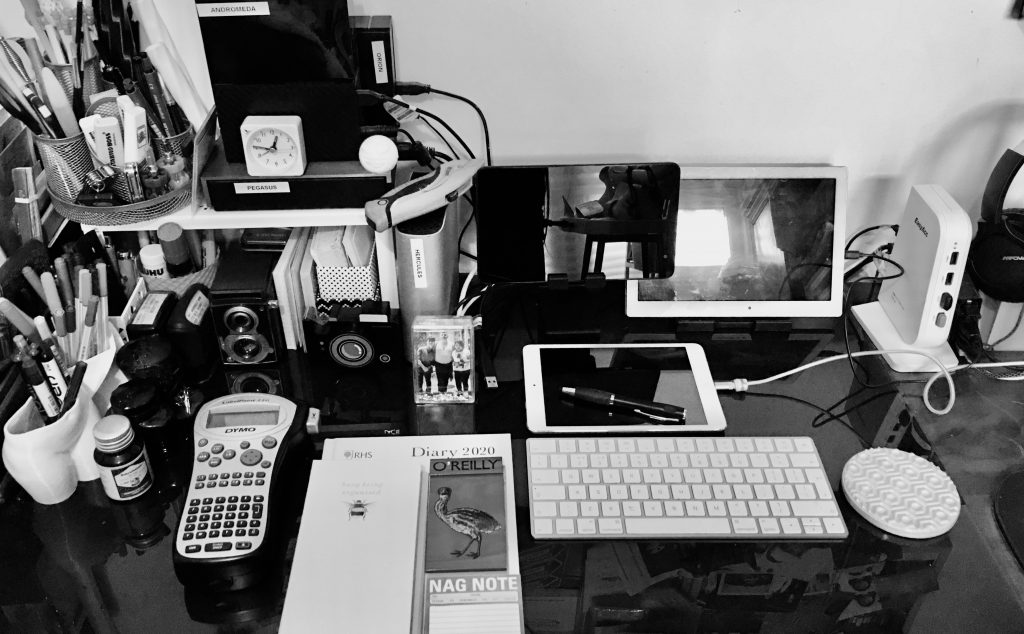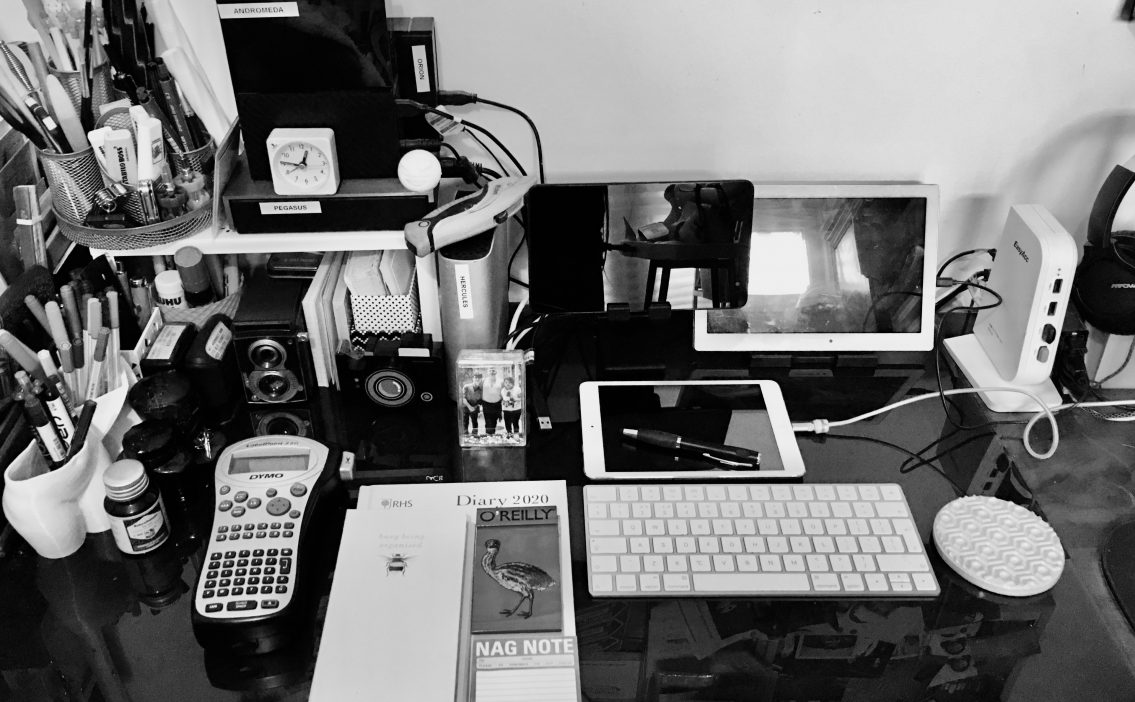Return of the machine, Protecting files
My computer died several weeks ago. And with the current Covid-19 pandemic, everything took a long time to get fixed. My main worry was not about the computer but its contents- my files. I doubted whether my Time Machine was working or if my cloud backup was complete. It did not help that my password management app Splash ID had a bug that sent me to an endless loop of “enter your new password”. And that their customer support after a lot of email exchanges, just put the blame on me… that I forgot my password when in reality I just changed it in the app.

Desk without the computer
Anyway, the uncertainty ended when my computer was returned to me with brand new disks. It meant that anything in that computer was lost and I had to rely on my backups. I am very thankful to have used an Apple product, because in the absence of my passwords, I am still able to access my emails since they (and the settings) are saved in iCloud. It made life a teeny bit easier. I’ve been downloading my backup data, reorganising my files and the most time consuming of all is reorganising my 10+ terabytes of photographs in Lightroom because my old catalog was gone after the reinstall.
This experience reminded me to prioritise on protecting my data. Whether it’s the photographs, the documents, the apps… every single one that I use are important to me.
From this experience here are my tips on protecting your data.
- Organise your files
You can organise them by folder, categories or whatever, sort your data according to what works for you. Just make sure you can easily find them when you search for them (without the help of you computer’s search button. - Create copies
One of the things I regretted the most after this experience is to not create a copy of an app that’s been discontinued but is still very useful to me. In order for you to not experience this kind of problem, make copies of even the installation files and store them somewhere safe. I now put several of my software installation files in my Dropbox. - Keep your passwords safe
Use a reliable password manager & write the important ones (ie. master passwords) in a notebook and put in your safe. A reliable password manager is 1Password as well as those often mentioned in tech magazines/blogs, the unreliable one is Splash ID. - Backup in different ways
Have an external drive locally to back your data and use one of those cloud services available on subscription. I use Backblaze. It is affordable with unlimited space (my current backup is 10terabytes) and easy to use. For the full backup, my Dropbox space is too limited that’s why I only use it for software or to share files with friends. If you’re a Mac/iPhone user like me, do not underestimate the power of your iCloud. It saved me a lot of hassle when I lost access to my passwords.
Here’s more. Do you know that you can use Flickr to backup your photos? And if you have a google account, you also have several Gigs of space via Google Drive.

No Comments